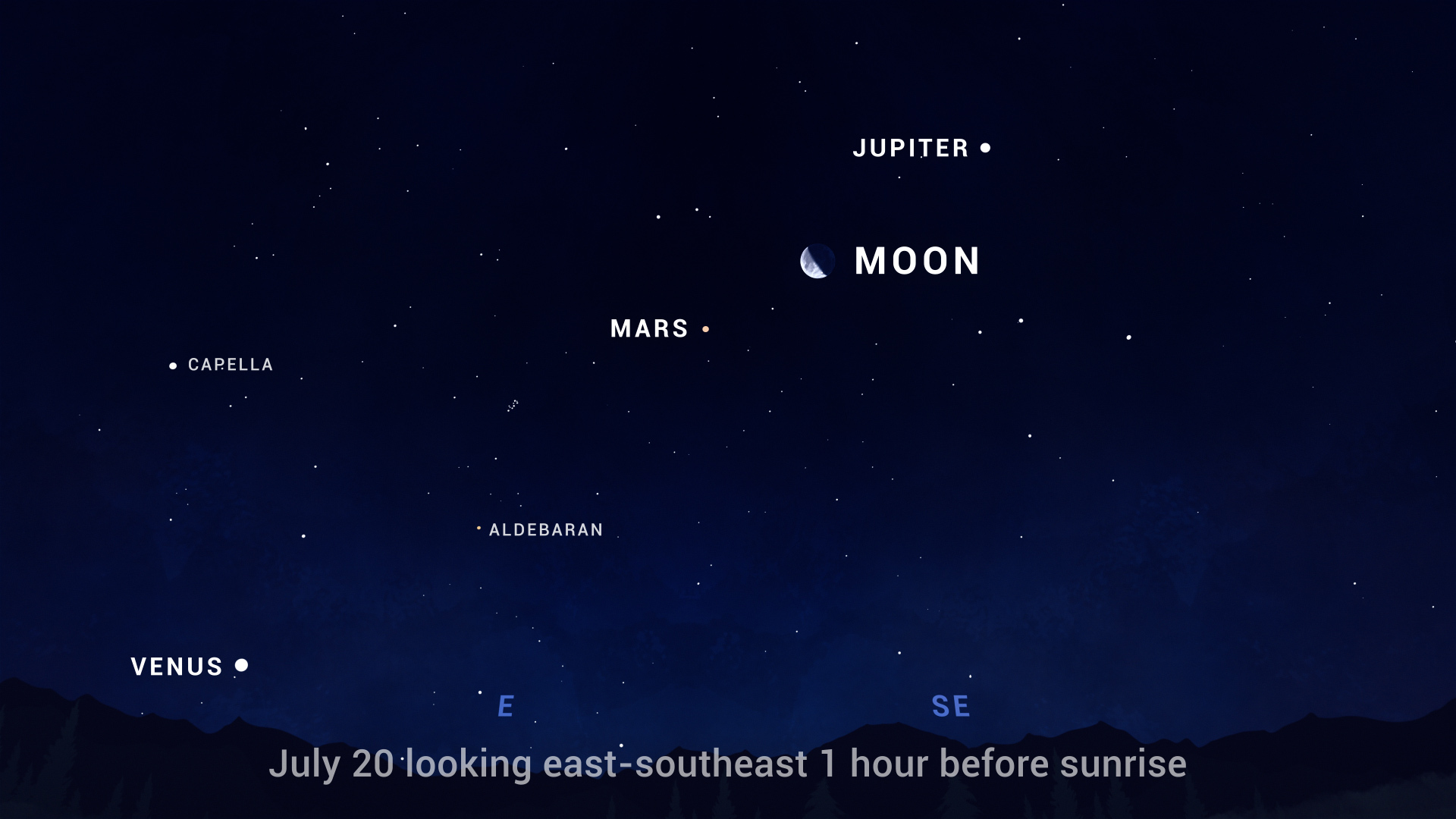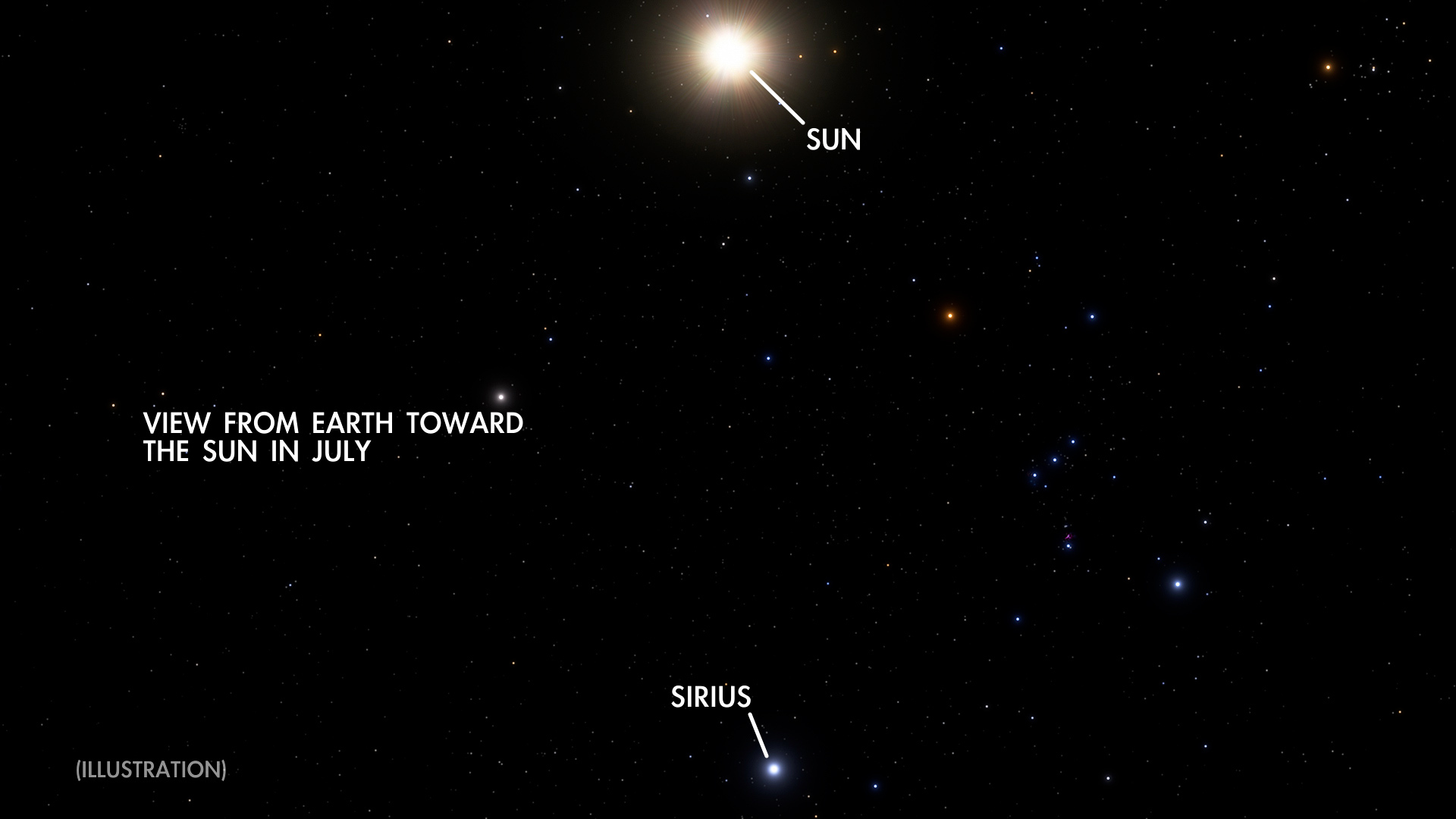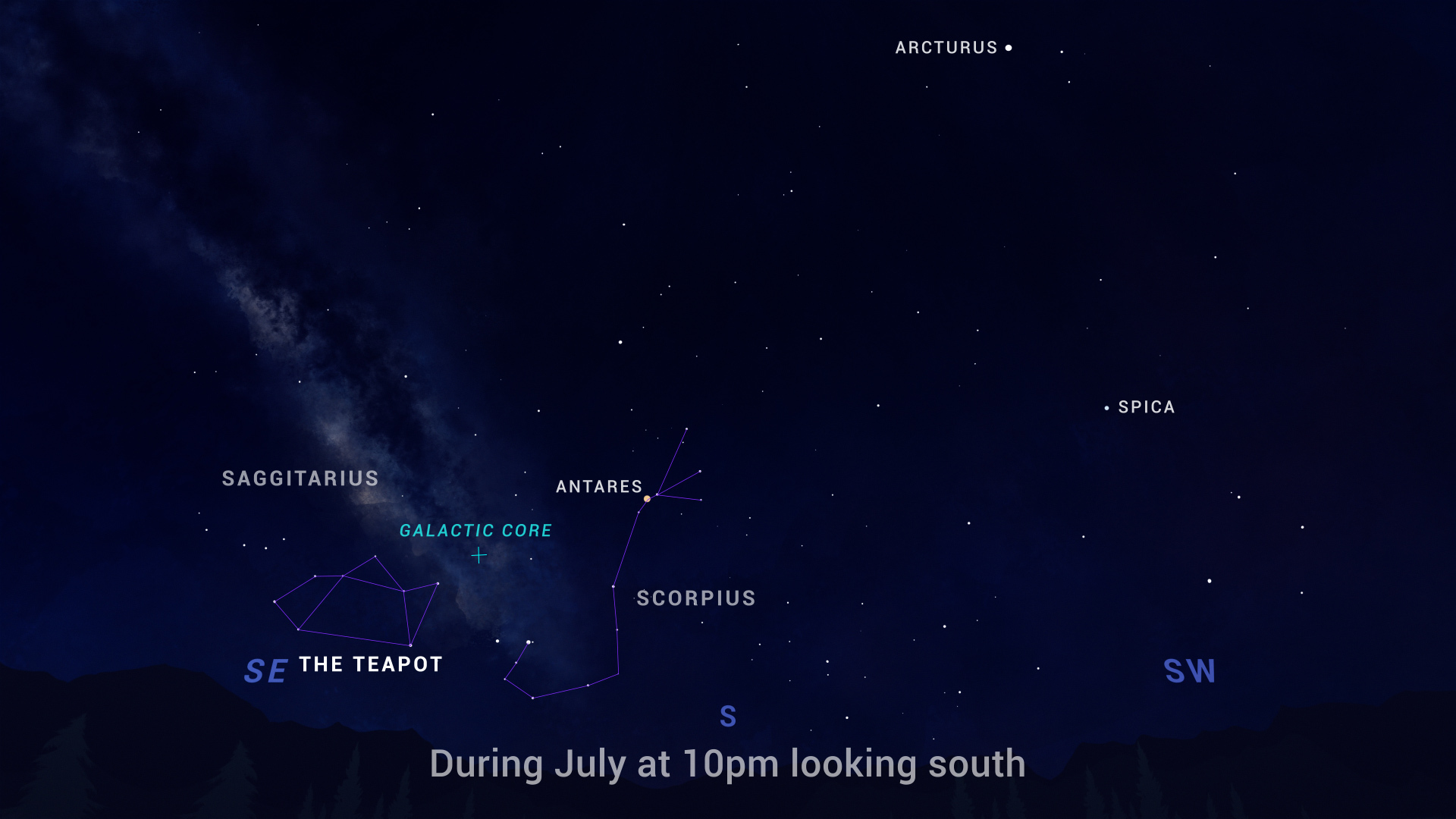What’s Up: July 2022
| Credit | Credit: NASA/JPL-Caltech |
|---|---|
| Language |
|
What's Up for July? The planets at dawn, the dog days of summer, and the Teapot points to the center of the Milky Way.

The planets Mars, Jupiter, and Saturn dominate morning skies in July. Venus is there as well, but appears low in the east, so you'll need a clear view toward the horizon to see it. The planets are spread out across the morning sky, accompanied by bright stars, Capella, Aldebaran, and Fomalhaut. On the 20th, look for the half-full, last-quarter moon between Mars and Jupiter. And the following morning, you'll find the Moon sitting right next to Mars.
July is a time for sweltering hot weather in the Northern Hemisphere, and you may have heard this time of year referred to as the "dog days of summer." Well that phrase actually dates back to ancient times and has to do with the brightest star in the sky, Sirius.

At the peak of summer, the Sun lies in the same part of the sky as Sirius, which the ancient Greeks and Romans associated with the dog-shaped constellation Canis major, just as we do today. Sirius is its most prominent star, and it's sometimes called "the dog star."
In Ancient Greek, Sirius means "the scorcher," and both the Greeks and Romans believed the blazing bright star's proximity in the sky added to the Sun's heat during that time of the year making it even more oppressive. And so they called this hot time of year the "dog days."
Of course, today we know the only star close enough to affect our temperatures on Earth is the Sun. And the heat we experience in July is the result of the Northern Hemisphere being tilted toward the Sun. This yields longer days and more direct sunlight, and thus warmer weather. The situation is reversed in the Southern Hemisphere, where July is right in the middle of winter.
Facing southward on July nights after sunset, you'll find a sky teeming with bright stars. Looking in that direction this time of year, you're facing the center of our galaxy, the Milky Way, all night, and there are quite a number of bright stars in that part of the sky – particularly in the constellations Scorpius and Sagittarius.
Now if you find yourself under dark skies you'll be able to fully enjoy the Milky Way core – densely packed with stars and dark clouds of dust and gas. It's dazzling this time of year, and it's visible toward the south as soon as it gets fully dark out. But even if you're under urban skies too bright to observe the Milky Way core, the group of stars in Sagittarius known as the Teapot will help you pinpoint its location on the sky.

The Teapot is a well-known asterism, or pattern of stars, and like Scorpius the scorpion nearby, once you're familiar with it, it's hard not to see a teapot there in the sky. The galaxy's core lies just right of the stars of the Teapot's "spout." Over the course of the night, it appears to tilt as though its spout is pouring out a cosmic "cuppa." And under dark skies, the Milky Way appears as a plume of steam rising from the spout. So here's hoping you get a chance to enjoy the Milky Way in July, or at least that you find your way to the galaxy's core thanks to the Teapot.
Stay up to date with all of NASA's missions to explore the solar system and beyond at nasa.gov. I'm Preston Dyches from NASA's Jet Propulsion Laboratory, and that's What's Up for this month.
